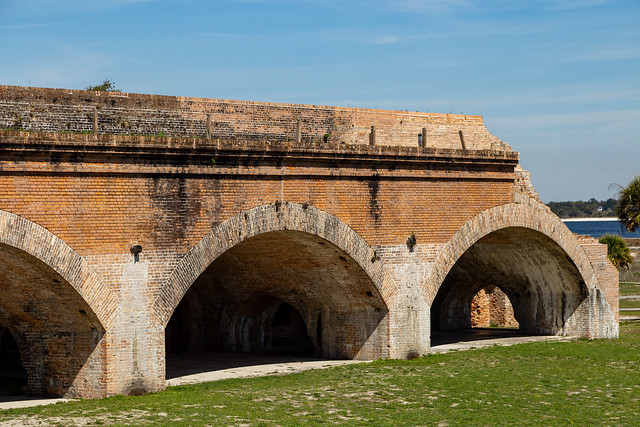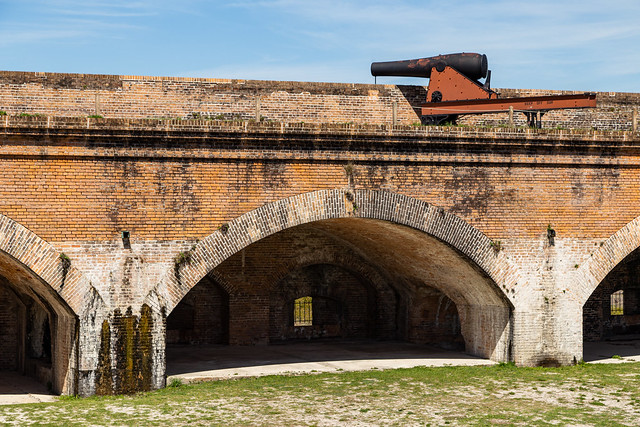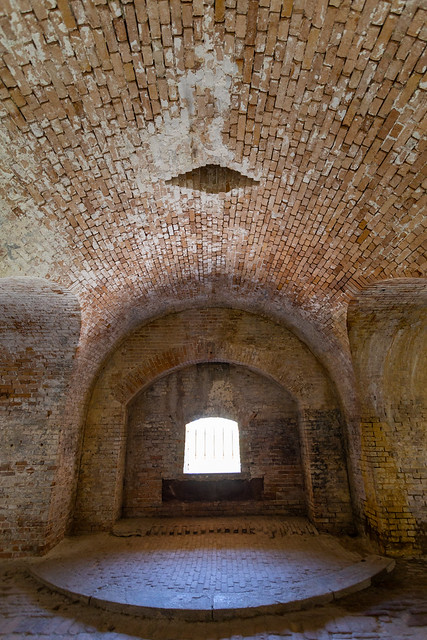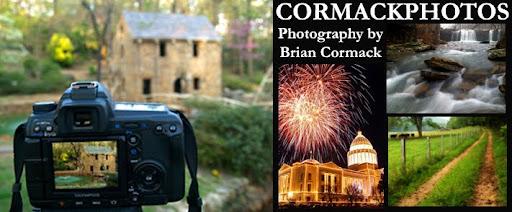
The people who weren't fishing were looking up in the sky, since the Blue Angels were out doing some practice flights.

And then we began the tour of Fort Pickens. After the War of 1812, the US government sought to better defend all of its major ports. Pensacola Bay, and its Navy yard, was considered to be of upmost importance. So a series of forts were planned on the barrier islands around Pensacola Bay. Fort Pickens was the largest of the forts, and construction began in 1829 and was completed in 1834.

Over 21.5 million bricks were used in the construction of the fort. The labor was provided by enslaved people, who toiled in difficult conditions. Many suffered heat exhaustion, and others caught yellow fever. When it was completed, it was one of the largest brick structures along the Gulf Coast.


During its long history, the only time the fort was under attack was during the Civil War. The fort remained in US control during the entire war, despite attacks from confederate troops in 1861. During the war, the fort would become a destination on the Underground Railroad, as enslaved people would travel there to become emancipated.


The fort was much larger than I thought it would be. There were lots of areas to look around and explore.


After the Civil War, a large number of prisoners from the Indian Wars were sent to Fort Pickens. Among the members of the Apache that were held here was Geronimo.



These narrow brick passages were already considered obsolete by the 1890s, as better technology meant different types of defensive weapons were needed. Part of the parade ground in the middle of the fort was taken up by larger and more modern canons. And mines were stored at Fort Pickens, which could be placed in Pensacola Bay if it came under attack.

In 1899, a fire in the fort reached one of the bastions that held about 8,000 pounds of gunpowder. The resulting explosion completed destroyed the bastion and sent bricks flying for over a mile and half.

Additional defensive batteries were added to the lands around the fort after World War I, and then more were added during World War II.


After World War II, the fort was considered fully obsolete, since the Blue Angels could probably better attack an enemy ship than a few old canons could. The fort was made a part of the Gulf Islands National Seashore in 1972.


But maybe the biggest threat to the fort hasn't been confederate artillery or German U-boats. It's been Mother Nature. The old fort has been hit by a few hurricanes over the years, and has had to close for repairs and restorations.


It was an interesting place to visit. It's hard to think about what it must have been like way back when it was being built. Or to have been a soldier there in the summer heat being on the look-out for enemy ships. Would people 150 years ago have been able to imagine that tourists in the future would be taking selfies there? Or that people would be able to simply hop in their air-conditioned car and drive down the road to go and eat a bunch of fried shrimp from a place like Peg Leg Pete's?


No comments:
Post a Comment